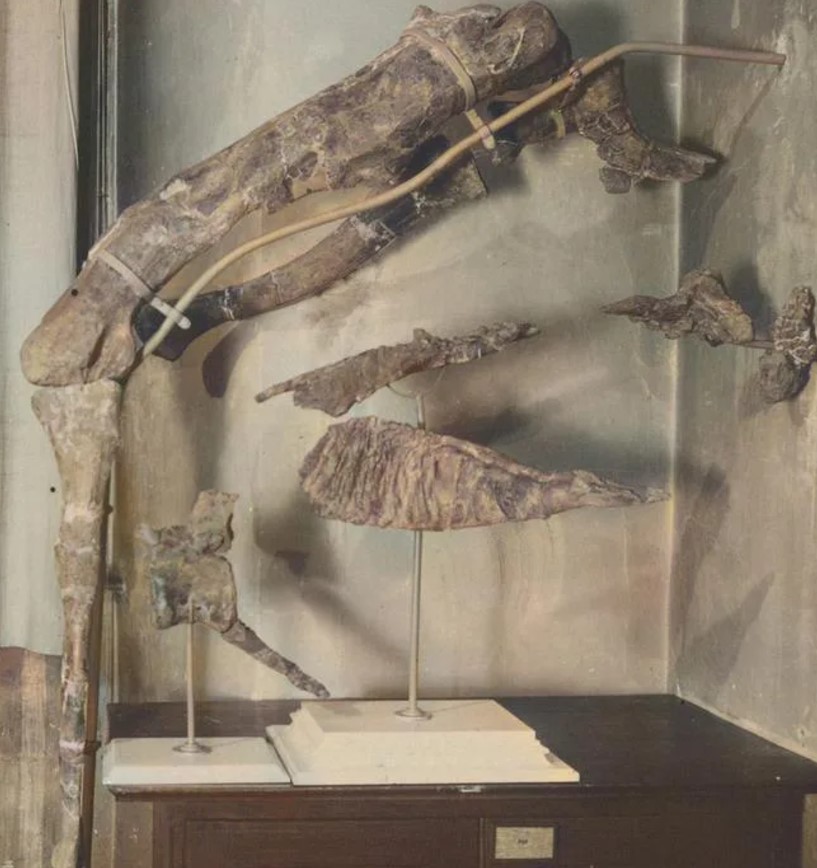The discovery of a new dinosaur species, Tameryraptor markgrafi, or "thief from the beloved land," highlights the extraordinary nature of paleontological research and the power of historical records to unlock scientific secrets. This large carnivorous dinosaur, estimated to have been 33 feet long, roamed the sands of Egypt approximately 95 million years ago. Remarkably, this discovery comes not from newly unearthed fossils, but from photographs of fossils originally discovered in 1914, which were tragically destroyed during a World War II bombing raid in 1944. These rediscovered photographs, initially assumed to depict a known species, revealed surprising anatomical details that ultimately led to the identification of this entirely new species.
The story of Tameryraptor begins over a century ago with the initial fossil discovery by German scientists. These fossils were initially categorized by renowned German paleontologist Ernst Stromer as belonging to Carcharodontosaurus, a group of large theropod dinosaurs known for their formidable size and predatory nature. Stromer based this classification on similarities with another fossil specimen unearthed in Algeria, primarily consisting of teeth. The Egyptian specimen, being more complete, became the prime example of the Carcharodontosaurus group. However, the destruction of these precious fossils during wartime bombing seemingly consigned this important specimen to scientific oblivion.
The recent rediscovery of photographs documenting the original Tameryraptor fossils presented a unique opportunity for modern paleontologists. Maximilian Kellermann, a doctoral student involved in the research, was initially perplexed by the photographs, but his curiosity quickly turned to excitement as the team meticulously analyzed the images. Upon closer inspection, distinct features emerged that differentiated the Egyptian fossils from other Carcharodontosaurus specimens. These included a prominent horn, an enlarged frontal brain region, and other anatomical variations not observed in other members of this dinosaur group.
The realization that the photographs depicted a previously unknown species presented a unique challenge for the research team. Typically, the description and naming of a new dinosaur species relies on direct examination of the fossil remains. However, in the case of Tameryraptor, the team had to base their findings solely on the photographic evidence and Stromer’s original descriptions. This "exceptional case" demonstrated the valuable role historical data can play in scientific discovery, effectively resurrecting lost knowledge.
Comparative analysis of the photographs with Stromer’s descriptions and other known Carcharodontosaurus fossils solidified the conclusion that the Egyptian specimen represented a distinct genus. The name Tameryraptor markgrafi was chosen, combining "Ta-Mery," the ancient Egyptian name for Egypt meaning "beloved land," with "raptor," the Latin word for "thief." This nomenclature honors both the geographical origin of the fossils and the presumed predatory nature of the dinosaur. The species name "markgrafi" likely honors a person associated with the discovery or research, though the specific details haven’t been widely publicized.
This remarkable discovery carries broader implications for our understanding of dinosaur diversity in North Africa. The existence of Tameryraptor suggests a richer and more complex prehistoric ecosystem than previously thought. While the rediscovered photographs have provided invaluable insight, further research is crucial to fully elucidate the evolutionary relationships and ecological role of Tameryraptor within the broader context of dinosaur evolution. This research highlights the enduring power of scientific inquiry and the capacity of historical data to reveal hidden chapters in Earth’s ancient history. The story of Tameryraptor serves as a testament to the resilience of scientific knowledge and the ongoing quest to unravel the mysteries of our planet’s past.











